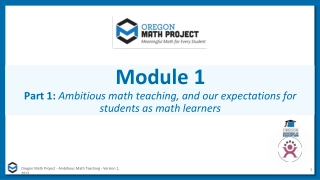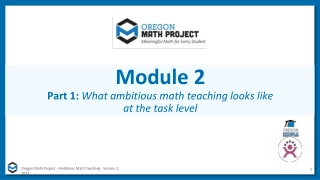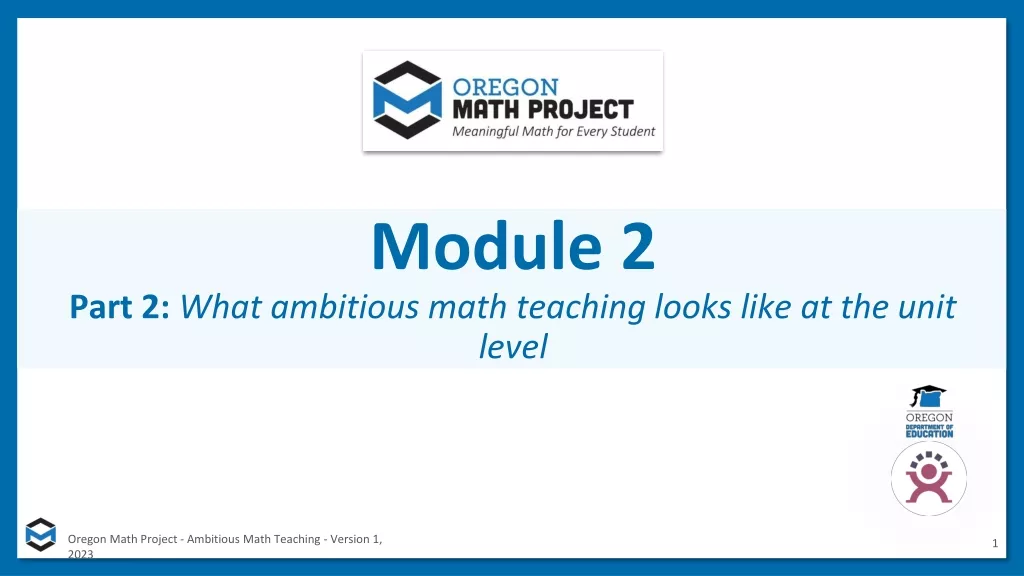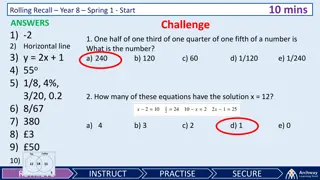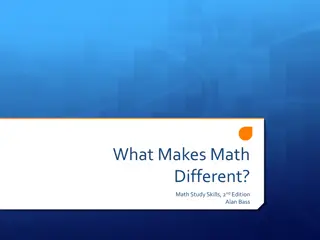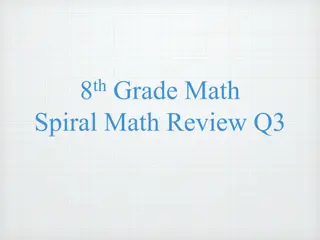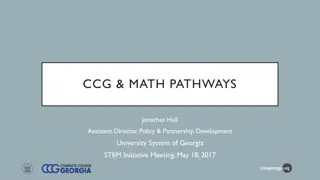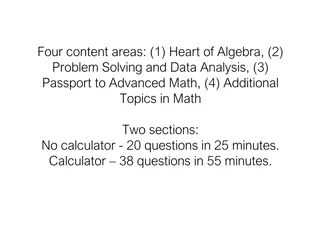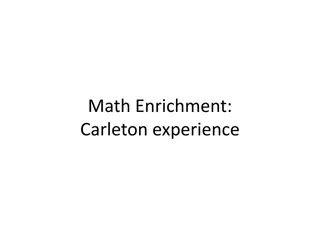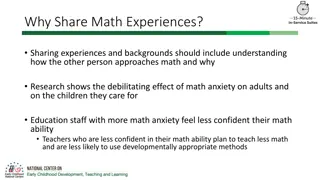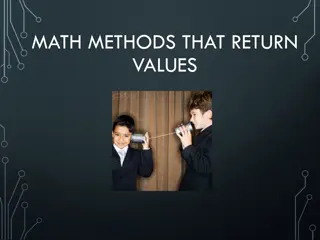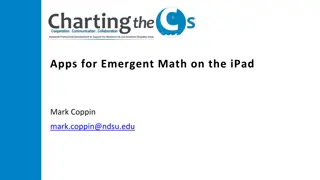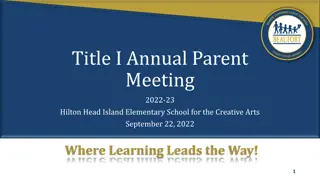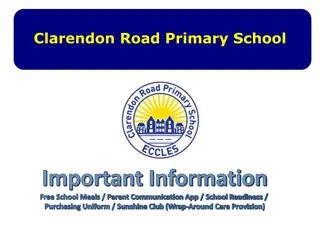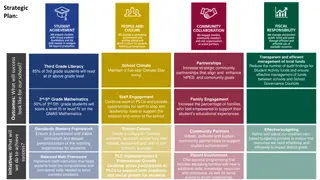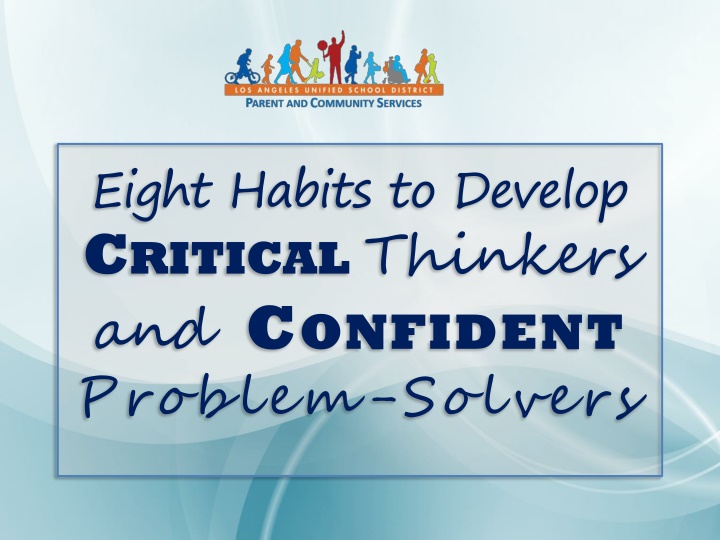
Developing Critical Thinkers and Confident Problem-Solvers
Discover eight habits to nurture critical thinking and problem-solving skills in individuals. Explore concepts like grounding, LAUSD goals, Common Core State Standards, and promoting positive attitudes towards mathematics.
Uploaded on | 2 Views
Download Presentation

Please find below an Image/Link to download the presentation.
The content on the website is provided AS IS for your information and personal use only. It may not be sold, licensed, or shared on other websites without obtaining consent from the author. If you encounter any issues during the download, it is possible that the publisher has removed the file from their server.
You are allowed to download the files provided on this website for personal or commercial use, subject to the condition that they are used lawfully. All files are the property of their respective owners.
The content on the website is provided AS IS for your information and personal use only. It may not be sold, licensed, or shared on other websites without obtaining consent from the author.
E N D
Presentation Transcript
Eight Habits to Develop CRITICAL Thinkers and CONFIDENT Problem-Solvers
2 Grounding: Like Me WHY? WHAT? HOW? Listen for a statement that is true for you. If you agree with the statement, stand up. Look around and make eye contact with the other parents who are standing. Sit down.
3 Objectives 1. Understand how the Common Core Standards prepare students for college and career options and align with LAUSD s goals 2. Learn how you can promote positive attitudes about math and help your children think like mathematicians 3. Take back resources and information to use at home to support math learning
4 Understand how the Common Core Standards prepare students for college and career options and align with LAUSD s goals OBJECTIVE 1
5 LAUSD Goal 100% Graduation
6 LAUSD OBJECTIVES Proficiency for All 100 % Attendance Parent & Community Engagement School Safety Solid foundation for Early Learners
Common Core State Standards (CCSS) What are they? The CCSS are the expectations of what students should know by the end of each grade level. The CCSS ask students to demonstrateskillsand communicatetheir thinking. 7 The CCSS are relevant, so learning is linkedto the real world and often across multiple disciplines. Learn more at achieve.lausd.net/Page/7532
8 Common Core State Standards for Mathematics (CCSS-M) Mathematical Practices describe good habits for thinking about and doing math Content Standards define what students should understand and be able to do Content Standards Math Practices + CCSS Math =
9 Learn how you can promote positive attitudes about math and help your children think like mathematicians OBJECTIVE 2
10 8 Math Practices Gallery Walk
11 Math Practice 1 Mathematically proficient students seek to FULLY UNDERSTAND what they re being asked to do and aren t afraid to TRY AGAIN if they don t succeed the first time. What are some personal ways you can apply this practice?
12 Math Practice 2 Mathematically proficient students MAKE SENSE of numbers and amounts. They think about how the numbers in the problem RELATE to one another. 12 2 3 = 7 2x 2 3 = 7 Can you develop a story to go with this equation?
13 Math Practice 3 Mathematically proficient students can FORM ARGUMENTS that make sense. They can also COMPARE the logic of two competing arguments and identify the one that is correct. Which of these statements do you think is most useful in real life?
14 Math Practice 4 Mathematically proficient students can VISUALLY REPRESENT situations to help them solve problems arising in everyday life, society, and the workplace. In which other school subject(s) might students be asked to create or visually represent information?
15 Math Practice Problem Ana can rent a New Release DVD for $2.50 each and a Movie Classic DVD for $1.00 each (including tax). On Saturday evening, Ana rented 5 DVDs and spent a total of $8.00. How many of the 5 rentals were New Releases and how many were Movie Classics ?* *Adapted from 2011 NAEP Sample Mathematics Problem - Grade 8
Math Practice 5 16 Mathematically proficient students consider the available TOOLS when solving a mathematical problem. What are the tools of mathematics? When is it appropriate to use them?
Math Practice 6 17 Mathematically proficient students COMMUNICATE PRECISELY, using clear definitions and specific units of measure. They calculate accurately and efficiently. Why is precision a good life-skill?
Math Practice 7 18 Mathematically proficient students can view problems from multiple perspectives, SEEING STRUCTURE and MAKING PREDICTIONS beyond it. 110 x How do students develop their prediction skills?
Math Practice 8 19 Mathematically proficient students notice if calculations are REPEATED, and look both for GENERAL METHODS and for SHORTCUTS. 1 9= 0.11111111 ?? . 1 Example: Ninths shortcut 2 9= 0.22222222 ?? . 2 What is a benefit of learning a shortcut?
Math Practices in Action 20 SEAL'S SLEEP A seal has to breathe even if it is asleep in the water. Martin observed a seal for one hour. At the start of his observation, the seal was at the surface and took a breath. It then dove to the bottom of the sea and started to sleep. From the bottom it slowly floated to the surface in 8 minutes and took a breath again. In 3 minutes it was back at the bottom of the sea again. Martin noticed that this whole process was a very regular one. After one hour the seal was a) At the bottom of the ocean floor b) On its way up to the surface c) Breathing d) On its way down to the ocean floor Source: Adapted from sample PISA Mathematics test question, OCED
21 Take back resources and information to use at home OBJECTIVE 3
23 Objectives Understand how the Common Core Standards prepare students for college and career options and align with LAUSD s goals Learn how you can promote positive attitudes about math and help your children think like mathematicians Take back resources and information to use at home
24 Thank you!

